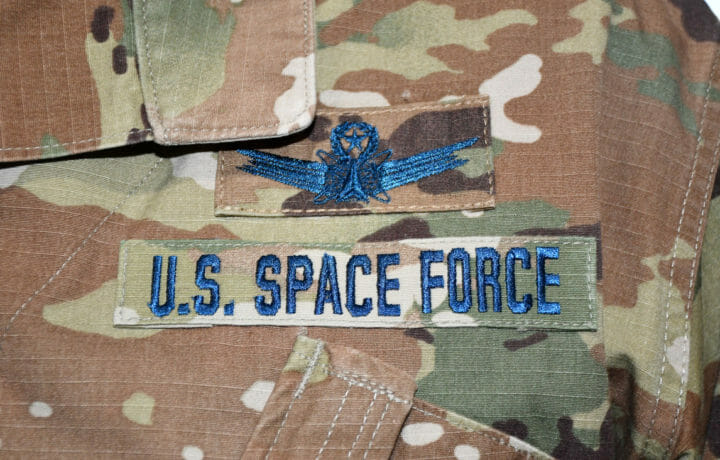In a speech earlier this month, during the eighth meeting of the National Space Council, Vice President Mike Pence announced the first two United States Space Force Bases. Both of the bases are in Florida and now the first two installations for the newest branch of the United States military.
The vice president dedicated the Cape Canaveral Space Force Station (SFS) and the Patrick Space Force Base (SFB).
“Today we make history with the first two installations in the history of the United States Space Force to bear the name of this new branch of the service,” Pence said during his speech. “It is a great day for our military. It is a great day for Florida, it is a great day for America.”
Pence also noted the contributions of the Space Force, which marks the first anniversary of its founding on Dec. 20. “It’s extraordinary to think of the contribution the United States Space Force will make to the security of our nation and the perpetuation of our freedom.”
Same Operations but distinct Culture and Identity
The redesignation of the two Florida bases will not change how they operate, nor will it officially designate either as functional U.S. Space Force installations. The name change has been seen as critical to establishing a distinct culture and identity for the Space Force.
“Today, we start a new era at both Cape Canaveral Space Force Station and Patrick Space Force Base aligning the installation names with their critical missions,” Chief of Space Operations, Gen. Jay Raymond said during his remarks at the ceremony, noting specifically the long-running accomplishments of the 45th Space Wing at the installation.
“Their titles will reflect the space missions that the 45th Space Wing and its mission partners execute with precision, passion, and pride every day. Moving forward, we will integrate our service, elevating the power that space brings to the nation, the joint force, and our allies,” Raymond said, referring to the facility as “hallowed ground.”
Both bases are closely tied to the history of the United States space program, and it was at the newly named Cape Canaveral SFS that is home to the historic but now retired launch pads from where the first U.S. satellite Explorer 1 was launched in 1958.
It is also where the first American astronauts, including Alan Shepard, were “blasted off” into space. Neil Armstrong, Buzz Aldrin and Michael Collins also lifted off from the facility’s Launchpad 39B in 1969 with the Apollo 11 mission that was the first to land humans on the moon and return them safely to earth.
Cape Canaveral SFS was first established as the Joint Long Range Proving Ground in 1948 following the transfer of the base from the U.S. Navy to the then-newly established United States Air Force. The launch site has also been know as the Air Force Missile Test Center (1951), Cape Canaveral Missile Annex (1958) and Cape Kennedy Air Force Station (1963), become being renamed Cape Canaveral Air Force Station in 1973.
Patrick SFS has also gone through some name changes, and was previously designated the Banana River Naval Air Station and Joint Long Range Proving Ground Base before being renamed in honor of Army Major General Mason Patrick, the first chief of the Army Air Corps, in 1960.
Space Force officials have emphasized that until final decisions are made relating to Space, the “jurisdiction and command” of both bases will remain under the Air Force. The new designations will affect current base operating support, funding, or current agreements at either Patrick SFS or Cape Canaveral SFS.
Member of the IC
Space Force is about to become the 18th member of the U.S. intelligence community (IC), Director of National Intelligence John Ratcliffe announced on Dec. 9.
Intelligence elements of the U.S. Army, Navy, Marines Corps and Air Force are already part of the IC, and the Space Force will be added next during the National Space Council meeting.
“We see this as a critical next step in establishing the nation’s newest service,” added Maj. Gen. Leah Lauderback, Space Force director intelligence, surveillance, and reconnaissance.
Currently the IC operates as two independent agencies: the Office of the Director of National Intelligence and the Central Intelligence Agency. There are also eight Department of Defense elements, including the Defense Intelligence Agency, the National Security Agency, the National Geospatial- Intelligence Agency, the National Reconnaissance Office and intelligence elements of the four armed services. The other seven include elements of the Department of Energy, the Department of Homeland Security, the Department of Justice, the Department of State and the Department of the Treasury.
“As members of the intelligence community we will be able to better advocate for intelligence funding to support space as a growing mission area,” Lauderback said. “We look forward to further integrating into the intelligence community and partnering with existing members to strengthen the community.”
U.S. lawmakers have proposed legislation that would bring an element of the intelligence community into the Space Force. However, language adopted by the Senate in the Intelligence Authorization Act for Fiscal Year 2021 requires the direction of national intelligence, Department of Defense (DoD), Air Force and Space Force leaders to “submit a plan for establishing an element of the intelligence community within the United States Space Force,” SpaceNews.com reported. The final bill has not yet been passed by Congress.



